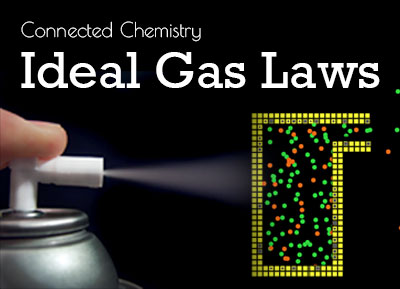Let us begin our exploration of the relationship between gas pressure and gas temperature with another NetLogo model. In this model, we have a fixed-volume gas container similar to our previous Bike Tire model. However, this model allows us to warm up and cool down the walls of the container.
When a particle hits the wall, two things may happen:
- If it has more kinetic energy than the energy of the wall, it will loose some of its energy.
- the loss of energy is dependent on the difference between the particle's energy and the wall's energy.
- If it has less energy than the energy of the wall, it will gain some energy.
- the gain of energy is dependent on the difference between the particle's energy and the wall's energy.
- Particles only have kinetic energy. The higher a particle's kinetic energy, the faster it moves.
- a particle will speed up if it gains energy from the wall
- a particle will slow down if it looses energy to the wall
Now begin exploring the model:
- Run the model by clicking "setup" and then clicking "go".
- Wait until all three plots stabilize.
- Warm up the walls (at least 6).
- Observe the changes in plots.
- Repeat the same steps, but this time cool down the walls.
Some quick notes: The temperature of a gas is related to the average speed of the particles. When the average particle speed increases, the temperature also increases. However, this is not a linear relationship. Gas temperature is proportional to the square of the average particle speed. For example, if you double the average speed, you will quadruple the temperature.
Even though temperature and average particle speed are not directly proportional, when one increases the other will too. This means we can still use them to make comparisons and develop mathematical models.





 Please set your computer aside briefly (do not close this page) and join the classroom discussion that your teacher is going to moderate.
Please set your computer aside briefly (do not close this page) and join the classroom discussion that your teacher is going to moderate. If the discussion has not started yet, please answer the following question: Watch the experiment on the right carefully.
If the discussion has not started yet, please answer the following question: Watch the experiment on the right carefully.  slider.
slider. Did you also find a mathematical equation using CODAP's "movable line" tool? If you did not, please do it now.
Did you also find a mathematical equation using CODAP's "movable line" tool? If you did not, please do it now. ) and then clicking "Open".
) and then clicking "Open". option.
option. ).
). )
) ).
).
